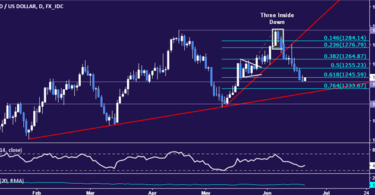When will the strong dollar weaken? Ultimately, the answer is whenever the Treasury wants.
When the Treasury is not overly concerned with the dollar, market forces can prevail to raise or lower the exchange rate compared with euros, Swiss francs, yen or any other currency.
Sometimes, other central banks intervene to raise or lower their currencies relative to the dollar and the U.S. does not seem to care. China is notorious for this. Japan and Switzerland are other practiced currency manipulators.
The last fully coordinated currency market intervention was conducted by the G-7 in March 2011 at the time of the Fukushima, Japan, earthquake and tsunami that caused the collapse of a nuclear power plant and ultimately a crash of the Tokyo stock exchange.
The Japanese economy was weakened by the natural disaster. A weaker yen would have helped the economy with cheaper exports and more inflation. But insurance companies had to sell dollar-denominated assets and buy yen in order to pay yen-denominated claims for the disaster losses. The result was a stronger yen.
The G-7 intervention, organized by then French Finance Minister Christine Lagarde, successfully sold yen and bought euros, dollars and sterling to weaken the yen despite insurance companies buying it. Lagarde’s success in this intervention was instrumental in her elevation to head of the IMF shortly thereafter.
In short, except in extraordinary circumstances, the U.S. Treasury does not directly intervene in currency markets to target U.S. dollar exchange rates. If such targeting is needed, the Treasury will work with the Fed to raise interest rates or take a pause in rate hikes to affect the dollar’s value.
All of this may be about to change.
Both President Trump and Treasury Secretary Mnuchin have publicly expressed dismay at the dollar’s persistent strength in the second half of 2018. A strong dollar has adverse effects relative to Trump’s economic plans.
It makes imports less expensive, which has a deflationary impact on the U.S. domestic economy. This is at a time when both the Fed and the White House would like to see more inflation.
A strong dollar also hurts U.S. exports from major companies such as Boeing and GE. That hurts U.S. competitiveness and U.S. jobs. Finally, a strong dollar hurts corporate profits of U.S. global companies because their overseas profits are translated back into fewer U.S. dollars. This is a head wind to U.S. stock market performance.
While the White House and Fed may be united in their desire to see a weaker dollar and more inflation, the Fed is doing nothing to achieve that. The Fed has been on a path of raising interest rates for almost three years, beginning with the “liftoff” rate hike in December 2015.
Since October 2017, the Fed has also been tightening money supply by not reinvesting in Treasury securities when existing securities in their portfolio mature. This “quantitative tightening,” or QT, is the opposite of quantitative easing, QE.
The combination of rate hikes and QT has caused a significant increase in U.S. interest rates in all maturities and, in turn, a stronger dollar as capital flows to the U.S. in search of higher yields. The result is a persistent strong dollar.
This means that if the White House and Treasury want a weaker dollar, they may have to achieve it on their own with no help from the Fed. The Treasury is well-equipped to do this kind of intervention by using their Exchange Stabilization Fund, or ESF… Full story at Rickards' Blog






